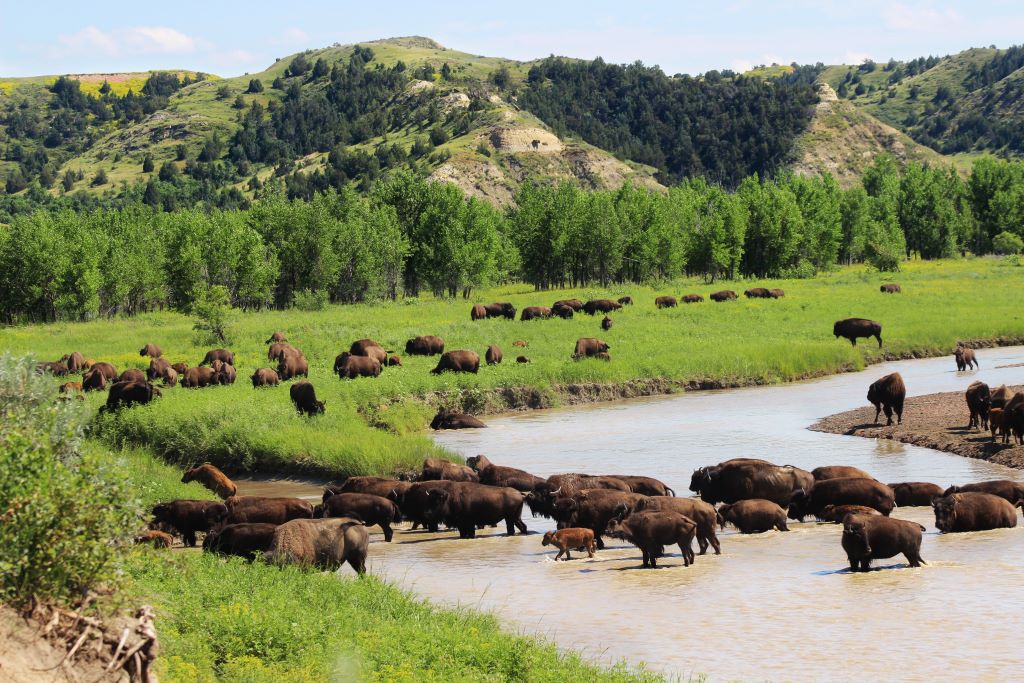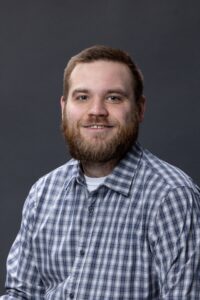Climate change puts Theodore Roosevelt National Park in hot spot
UND professor describes climate change’s impact on North Dakota’s national park

Climate change’s impact on the United States often is highlighted in states such as Florida, where the effects can be seen more quickly by the general population. But what of the impacts on our own backyard?
At a forum sponsored by UND’s Department of Geography, Professor Emeritus Paul Todhunter gave a talk addressing this topic. During his Geography Forum lecture, Todhunter presented his and a colleague’s research findings on climate change’s effects on Theodore Roosevelt National Park near Medora, ND.
The retired professor delivered an in-depth look at the park’s landscape, climatology and history in a small O’Kelly Hall classroom filled with geography students and faculty. His step-by-step walkthrough also offered insight into current practices in climate change research.
Todhunter described the highs and lows of academic research from the perspective of someone with 36 years of experience, while also delivering a geographical perspective on the outlook and causes of climate change at the park.
Todhunter said he initially became interested in pursuing the research after suggesting the topic to graduate student Rhonda DeVries.
“One of the great things about UND’s geography suite is that we’ve had some really good students. I’ve always tried to work with students to get them topics I thought might be publishable,” he said. So, he and DeVries got to work compiling data.
DeVries, a “fearless” student in Todhunter’s words, was excited at the prospect of the study and gathered data on temperature and moisture through 2010. This research was the genesis of the study, which Todhunter expanded to encompass data from 1895 to 2016.
Using datasets from vast and ever-expanding national climate networks, Todhunter collected and analyzed data for this more-than-century-long period. This staggering amount of information is necessary for a place like North Dakota, he said.
“In Miami, you don’t need 60 years of data because the climate doesn’t vary that much,” Todhunter said. But with its changing seasons and constantly varying climates, North Dakota requires a larger sample size to establish a pattern.
In what he described as his “most positive process in 36 years of academia,” Todhunter said that the road to publication was marked with learning moments. For example, his collaboration with the study’s editors allowed him to delve deep into the varying methods of measuring climate change.

He encountered one discovery when an associate editor for the research, a plant phenologist, suggested studying the blooming patterns of plants to measure climate. It makes sense, and as Todhunter said, “plants know that it’s warming better than you do.”
The process wasn’t without its setbacks, though. In an event he humorously described as “an exercise in efficiency,” Todhunter recalled having to redo do his entire, completed study when peer reviewers requested he include an additional three years of data up to 2019.
Despite the hiccups, the research process was very rewarding, Todhunter said. His detailed description of the park’s history, including Roosevelt’s relationship to North Dakota and the park’s majestic terrain, showed his strong interest in the national park and its history.
Moreover, Todhunter’s appreciation for the park’s “beautiful Badlands topography” and “magnificent scenery” were stark reminders that climate change is a significant threat to North Dakota’s oldest national park.
The data he collected revealed a high rate of climate change in the region. (In the words of the study, which was published in 2021 in the journal Climate Research, “the most pronounced changes were an increase in mean annual minimum air temperature and a decrease in mean annual diurnal temperature range.”)
The growing industrialization of countries such as Brazil and Indonesia has dramatically increased greenhouse gas emissions as efforts to reverse the effects continue to lose ground, Todhunter said.
In addition, national parks have compounding factors that put them in greater danger to the effects of climate change, he continued. For one, the increased elevation of natural parks hastens the environmental effects of rapid climate change.
Parks in western states, where climate change has had a more dramatic impact, are of particular concern, according to Todhunter. He notes that alpine glaciers in states such as Montana and Wyoming are disappearing, and changes to season lengths have disrupted the natural climate and ecology of national parks.

For Theodore Roosevelt National Park in particular, Todhunter says he has a few immediate concerns.
The area’s natural beauty makes it an attractive location for someone with enough money to construct a mansion. But this kind of population encroachment on parkland and the resulting pollution can compound the impacts of climate change and has been an ongoing problem in the area.
Furthermore, Todhunter calls the $100 million Theodore Roosevelt Presidential Library being built in Medora “both an opportunity and a challenge.” The small Medora community can expect additional thousands of tourists upon the library’s completion, further straining the area’s environment.
Despite this, Todhunter said that he’s optimistic that the Medora Foundation has been developing the library “methodically and thoughtfully,” and that says he’s “hopeful that they can make a go of it” in a way that mitigates negative effects.
After his presentation Todhunter emphasized the importance of geographic studies, citing it’s increasing importance in a rapidly changing world. He continued by saying that the country’s general lack of interest in geographic studies “bodes poorly for our nation in a world of increasing globalization and interconnectedness.”
Todhunter’s own prolific career as a professor and researcher has centered on North Dakota, which he says is a largely untapped goldmine for research and studies citing his work with the Grand Forks Flood of 1997 and pervasive flooding due to the expansion of prairie wetlands as examples.
“I have tried to engage in ‘public geography’ in my research, by focusing upon topics of relevance to the State of North Dakota,” Todhunter said of his interest in tackling regional issues, “there are a lot of interesting topics within the state, and few people examining them. Who to better examine them than a professor at UND?”
Students and faculty of the department say they value the Geography Forum talks, which give graduate students and subject experts a chance to showcase their research.
Enru Wang, the director of the department’s graduate program, says that he hopes the Geography Forum will help current geography students and people unfamiliar with the discipline alike.
“I hope the Forum will help everyone better understand the work geographers do and the career paths a degree like geography can lead them to,” Wang said.
“It’s nice to see so much diverse research from faculty and graduate students. I’ve been to several of these lectures, and they’re always really interesting,” graduate student Navodi Rodrigo said.
The Geography Forum is held on the third Wednesday of the month at department’s home in O’Kelly Hall. The department welcomes all members of the UND community and general public to its Forum events. The events are regularly posts upcoming lectures in the series to UND’s events calendar.
The next Geography Forum presentation will be ‘Google Earth Engine and Dynamic World: a platform and dataset for monitoring our changing planet.’ It will be presented by UND alumni and Google Earth Engine engineer Justin Braaten via Zoom.



